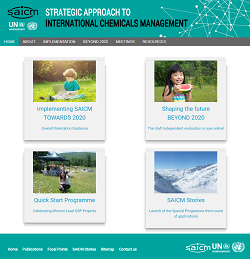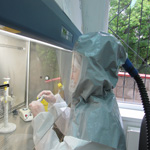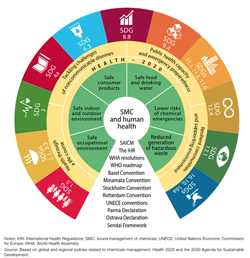Chemical safety
Chemicals are essential for economic development and well-being; however, if managed in an unsound way, they can pose significant risks to human health. The evidence is growing that hazardous chemicals contribute both to health disorders throughout the life-course and to the increased prevalence and incidence of noncommunicable diseases including cancer, urinary and reproductive system diseases, cardiovascular and respiratory diseases, allergies, neurodevelopmental and congenital defects and endocrine disruption. People need to be protected from exposure to hazardous chemicals throughout the life-course, but the most effective and most needed protection is in the early stages of life.
More about chemical safetyTop story
 Environment and Health Task Force meeting kicks off national planning in 7 key areas
Environment and Health Task Force meeting kicks off national planning in 7 key areas
Last year, countries in the WHO European Region adopted the Ostrava Declaration, which commits them to make visible, measurable and equitable progress on environment and health in 7 priority areas. In order to do this, Member States agreed to develop national portfolios of actions on environment and health by the end of 2018, coordinated by country-nominated focal points.
Publications
 Implementation of the Minamata Convention in the health sector: challenges and opportunities (2017)
More publications
Implementation of the Minamata Convention in the health sector: challenges and opportunities (2017)
More publications
SAICM

The Strategic Approach to International Chemicals Management (SAICM) is a policy framework that promotes international action on chemical hazards to ensure that, by the year 2020, chemicals are produced and used in ways that minimize significant adverse impacts on the environment and human health.
More about SAICM




